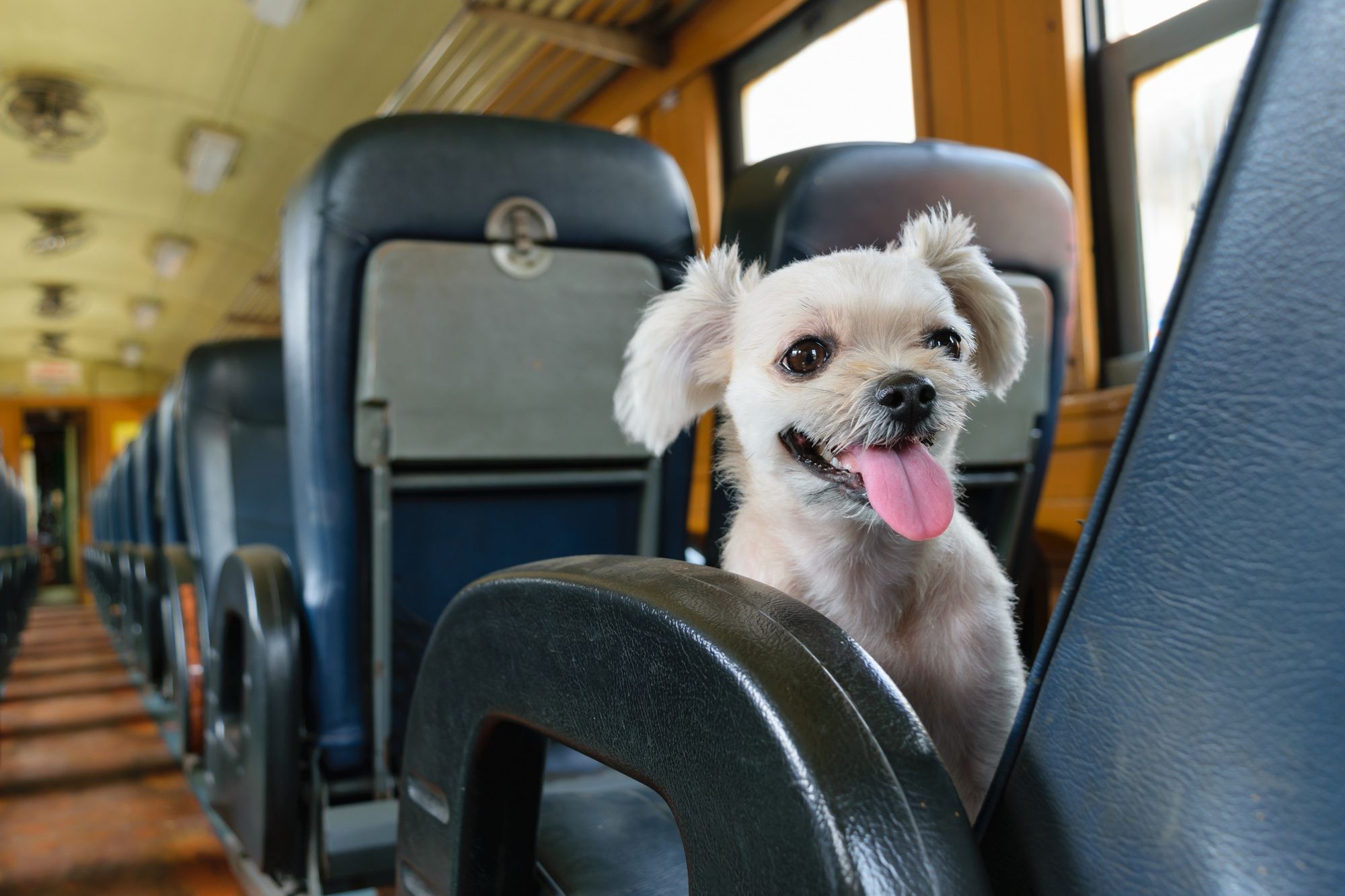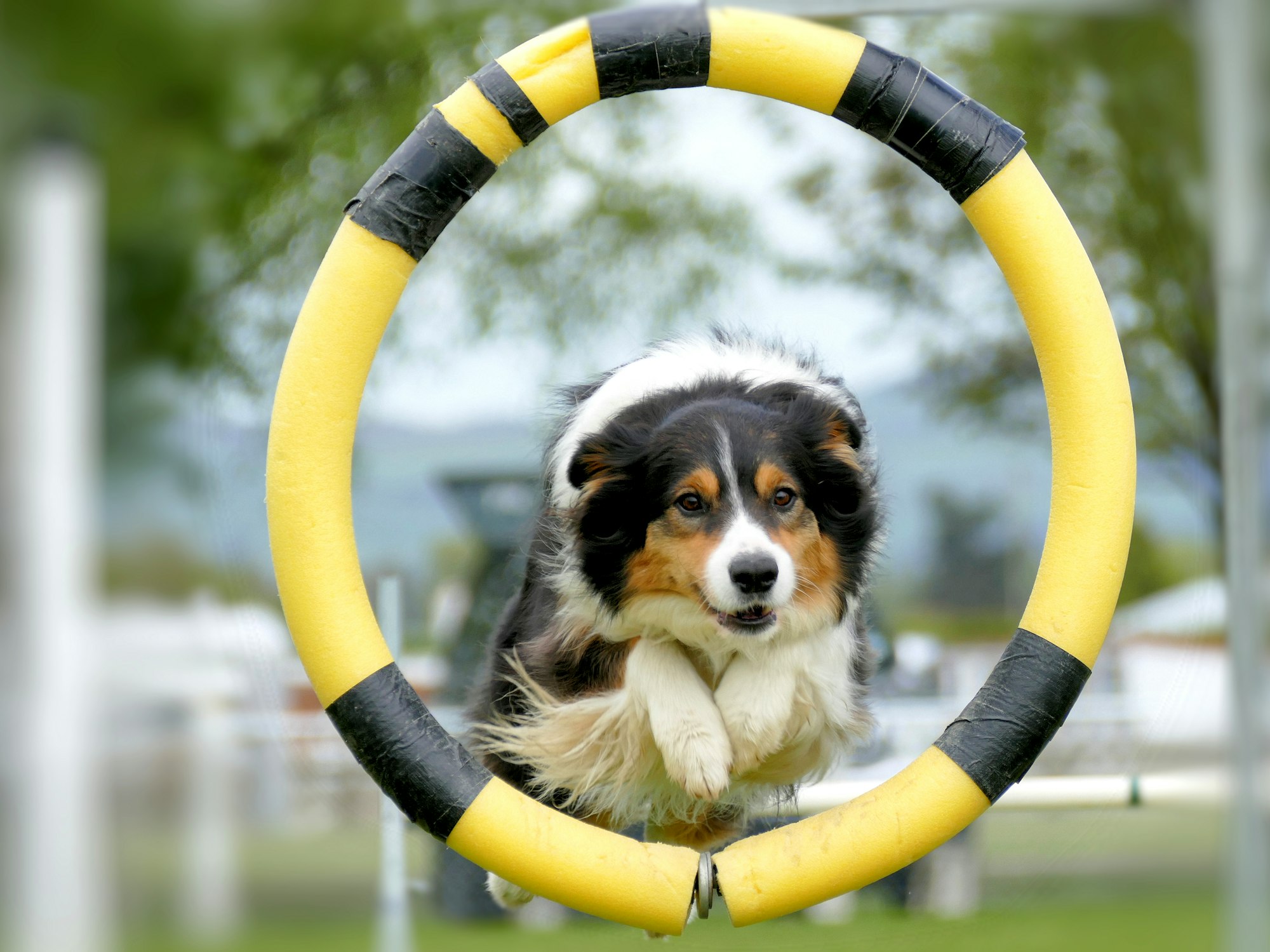Welcoming a furry friend into your home is a joyous experience, but effective communication is key to ensuring a harmonious relationship. Dogs, much like humans, have their own language, and understanding and effectively communicating with them is crucial for fostering desired behaviors. In this guide, we'll explore practical tips and techniques to communicate effectively with your canine companion.

Understanding Canine Communication
Dogs, being non-verbal creatures, communicate primarily through body language, vocalizations, and various cues. Understanding these forms of communication is fundamental to establishing a strong connection with your furry friend.
Body Language
A dog's body language is a rich and nuanced means of expression. Pay attention to their posture, tail position, and facial expressions. For example, a wagging tail doesn't always indicate happiness; it can also signify excitement or nervousness. Learning to interpret these signals enhances your ability to respond appropriately.
Vocalizations
Dogs use barks, growls, whines, and howls to convey their feelings. Each type of vocalization serves a different purpose. For instance, a high-pitched bark may indicate excitement or a desire to play, while a low, prolonged growl may signal discomfort or a warning. Understanding these vocal cues helps you decipher your dog's emotional state.

Scents and Cues
Dogs have a keen sense of smell and use it to communicate with each other and with you. They leave scent markings to establish territory and convey information. Additionally, dogs pick up on subtle cues in their environment, responding to changes in routine, new scents, or the arrival of unfamiliar people or animals.
The Importance of Clear Communication
Clear communication is the cornerstone of a successful relationship with your dog. Dogs thrive on consistency and clarity in the messages they receive from their owners.
Establishing Trust
Clear communication fosters trust between you and your dog. When your commands and actions are consistent, your dog feels secure and understands what is expected. This trust forms the basis for effective training and a harmonious coexistence.
Reinforcing Positive Behaviors
Clear communication enables you to reinforce positive behaviors effectively. Whether you're teaching basic commands or addressing specific issues, providing clear cues and rewards ensures that your dog associates their actions with positive outcomes.
Correcting Undesired Behaviors
In addition to promoting positive behaviors, clear communication allows you to address undesired behaviors promptly and effectively. Dogs, much like humans, respond well to constructive feedback when it is delivered clearly and consistently.
Building a Language Connection
Through clear communication, you and your dog develop a unique language that goes beyond words. Your dog learns to understand your tone, gestures, and cues, creating a strong bond that transcends verbal communication. This connection enhances the overall quality of your relationship.
Positive Reinforcement Techniques
Positive reinforcement is a powerful and humane method of dog training that focuses on rewarding desired behaviors. This approach not only encourages your dog to repeat positive actions but also strengthens the bond between you and your furry companion.
Treats and Praise
One of the most effective positive reinforcement techniques involves using treats and praise. When your dog exhibits a desired behavior, promptly reward them with a treat and enthusiastic praise. This creates a positive association with the action, making your dog more likely to repeat it.
Timing is Key
The timing of your reinforcement is crucial. Deliver treats or praise immediately after your dog performs the desired behavior. This helps them connect the action with the reward, reinforcing the behavior you want to encourage.
Varied Rewards
Keep your dog motivated by using a variety of rewards. While treats are often a favorite, mixing in other rewards such as playtime, favorite puzzle toys, or verbal praise adds excitement and keeps the training sessions engaging.
Consistency in Commands
Consistency in commands is fundamental to successful dog training. Dogs thrive on routine and clear communication, so maintaining consistency in the cues you use is essential for effective learning.
Use Clear and Simple Commands
Choose simple, distinct commands for each behavior you want to teach. Whether it's "sit," "stay," or "come," using clear and consistent commands helps your dog understand what is expected of them.
Enlist Family Members
Ensure everyone in your household uses the same commands and techniques. Consistency across all family members helps prevent confusion for your dog and accelerates the learning process.
Reinforce Good Behavior Consistently
Consistently reinforce positive behavior. Every time your dog follows a command correctly, reward them immediately. This reinforces the connection between the action and the positive outcome.
Training Sessions and Patience
Training your dog is an ongoing process that requires regular sessions and a considerable amount of patience. Here's how you can make the most of your training sessions while cultivating patience.
Regular, Short Sessions
Keep training sessions short and focused. Dogs have shorter attention spans, so breaking the training into brief, regular sessions prevents fatigue and helps maintain enthusiasm.
Be Patient and Positive
Patience is key to successful dog training. If your dog doesn't grasp a command immediately, stay patient and provide positive reinforcement when they eventually get it right. Frustration can hinder the learning process.
Gradual Progression
Progress in small steps. If you're teaching a new command, break it down into manageable parts. Gradually increase the difficulty as your dog becomes more proficient. This incremental approach keeps training enjoyable and achievable.
Understanding Canine Psychology

To communicate effectively with your dog, it's crucial to delve into the basics of canine psychology. Dogs, as sentient beings, have distinct behaviors and responses shaped by their evolutionary history and domestication.
Instincts and Drives
Understanding your dog's natural instincts and drives is key. For example, the instinct to chew, dig, or herd is often deeply ingrained in certain breeds. Recognizing and respecting these instincts can inform your approach to training and interactions.
Pack Mentality
Dogs are pack animals, and their behavior is influenced by a hierarchical structure. Recognizing yourself as the leader of the pack instills a sense of security in your dog. Establishing this leadership through positive reinforcement contributes to a harmonious relationship.
Sensory Perception
Dogs perceive the world primarily through their senses of smell, sight, and hearing. Being aware of their heightened sensory abilities helps you understand their reactions to various stimuli. It also emphasizes the importance of using clear signals and consistent cues in training.
Avoiding Negative Reinforcement
Negative reinforcement, often involving punishment or intimidation, can have detrimental effects on your dog's well-being and behavior. Instead, opt for positive and constructive approaches to foster a healthy relationship.
Understanding the Drawbacks
Negative reinforcement can lead to fear, anxiety, and aggression in dogs. It may suppress behaviors temporarily, but it doesn't address the root causes and can damage the trust between you and your pet.
Embracing Positive Reinforcement
Positive reinforcement focuses on rewarding desired behaviors, making it a more effective and humane approach. By using treats, praise, and play as rewards, you motivate your dog to exhibit positive actions willingly.
Redirecting Undesired Behaviors
Rather than punishing undesired behaviors, redirect your dog's attention to more appropriate activities. For example, if your dog is chewing on furniture, provide a chew toy as an alternative.
Socialization and Exposure
Socialization is a critical aspect of a dog's development, influencing their behavior and temperament. Exposing your dog to various environments, people, and animals helps create a well-adjusted and confident companion.
Early and Ongoing Socialization
Start socializing your puppy early, exposing them to different sights, sounds, and experiences. Ongoing socialization throughout their life prevents fear and aggression towards unfamiliar situations.
Interaction with Other Dogs
Allowing your dog to interact with other dogs in controlled environments fosters positive social behaviors. Well-socialized dogs are more likely to be comfortable in various social settings.
Exposure to Different Environments
Expose your dog to different environments, including parks, streets, and indoor spaces. This exposure helps them adapt to new surroundings, reducing separation anxiety in unfamiliar situations.
Choosing Appropriate Training Tools
Selecting the right training tools is crucial to ensure effective communication and a positive training experience for your dog. Consider humane and suitable tools that align with your training goals and your dog's individual needs.
Leashes and Collars
Choose a leash and collar that suits your dog's size and temperament. For example, a harness may be preferable for dogs prone to pulling, while a standard collar is suitable for those who walk calmly on a leash.
Clickers and Treat Pouches
Clickers provide a distinct sound to mark desired behaviors, facilitating positive reinforcement. Treat pouches are convenient for quick access to rewards during training sessions. Both tools enhance communication and motivation.
Interactive Dog Toys
Interactive toys, such as puzzle feeders, can be used as training tools. They engage your dog's mind and provide rewards, making training sessions enjoyable and mentally stimulating.
Building a Strong Bond
A strong bond between you and your dog forms the foundation for effective communication and successful training. Cultivate a relationship based on trust, understanding, and positive interactions.
Quality Time Together
Spend quality time with your dog. Whether it's playtime, walks, or simply relaxing together, these moments strengthen your bond. Dogs thrive on companionship and feel more connected when they regularly engage with their owners.
Positive Reinforcement
Use positive reinforcement consistently to reinforce desired behaviors. When your dog associates you with positive experiences, the bond between you grows stronger. This positive connection contributes to a more responsive and eager-to-please companion.
Grooming and Touch
Incorporate gentle grooming and touch into your interactions. This not only maintains your dog's physical well-being but also reinforces the bond through positive physical contact.

Addressing Behavioral Challenges
Behavioral challenges are a normal part of dog ownership, and addressing them requires patience, understanding, and strategic approaches. Here's how to navigate common challenges effectively.
Identifying Root Causes
Before addressing a behavioral issue, identify its root causes. Whether it's fear, anxiety, or lack of stimulation, understanding why the behavior occurs helps tailor your approach.
Positive Reinforcement for Correct Behaviors
When addressing undesired behaviors, focus on reinforcing correct behaviors. Reward your dog when they exhibit the desired response, redirecting their attention away from problematic actions.
Consistency and Clear Communication
Consistency is crucial in addressing behavioral challenges. Ensure that all family members follow the same approach, providing clear communication to avoid confusion.
Seeking Professional Guidance
For complex or persistent behavioral challenges, consider seeking the assistance of a professional happy dog trainer or behaviorist. They can provide personalized guidance and training strategies.
The Role of Consistent Rewards
Consistent rewards play a pivotal role in reinforcing positive behaviors and maintaining a harmonious relationship with your dog. By consistently offering rewards, you create a clear association between desired actions and positive outcomes.
Immediate Rewards
Timing is crucial when providing rewards. Offer treats, praise, or play immediately after your dog exhibits the desired behavior. This immediate reinforcement helps your dog connect the action with the positive outcome, reinforcing the behavior.
Varied Rewards
Keep your dog motivated by varying the types of rewards you offer. While treats are often effective, incorporating verbal praise, petting, or a favorite toy adds variety and excitement to the training process. This ensures ongoing engagement and enthusiasm.
Continuous Reinforcement
Consistency is not only about timing but also about the frequency of reinforcement. Initially, reward your dog frequently for correct behaviors. As they become more proficient, gradually reduce the frequency but continue to reinforce consistently to solidify the learned behaviors.
Creating a Positive Environment
A positive environment is essential for shaping your dog's behavior and ensuring their overall well-being. By fostering a supportive atmosphere, you contribute to a happier and more well-adjusted canine companion.
Consistent Routine
Dogs thrive on routine, and a consistent daily schedule provides a sense of security. Establish a regular routine for feeding, walks, playtime, and rest. Predictability in their environment helps reduce stress and promotes positive behaviors.
Safe and Comfortable Spaces
Create safe and comfortable spaces for your dog. Provide a cozy bed, toys, and a designated area where they can retreat when they need a break. Having a secure space contributes to a sense of well-being.
Positive Associations
Associate positive experiences with various aspects of your dog's life. For example, associate the car with enjoyable outings, the leash with exciting walks, and the crate with positive nap times. These positive associations contribute to a positive overall demeanor.
Clear Communication and Commands
Create a positive environment through clear communication. Use positive reinforcement techniques and consistent commands to convey your expectations. When your dog understands what is expected and is consistently rewarded for positive behaviors, they feel secure and confident.

Conclusion
Effectively communicating desired behaviors to your dog is a rewarding journey that strengthens the bond between you and your canine friend. With a mix of positive reinforcement, consistency, and understanding, you can guide your dog toward becoming a well-behaved and joyful member of your family.
Frequently Asked Questions (FAQs)
- Q: How long does it take to see results in my dog's behavior through training?
- A: The timeline varies, but with consistent training, you can see positive changes in a matter of weeks.
- Q: Are there specific breeds that are easier to train?
- A: While some breeds may be more receptive to training, individual temperament plays a significant role. Every dog can learn with the right approach.
- Q: What do I do if my dog exhibits aggressive behavior during training?
- A: Consult with a professional trainer or behaviorist to address aggression safely and effectively.
- Q: Can older dogs learn new behaviors through training?
- A: Yes, dogs of all ages can learn new behaviors with patience, consistency, and positive reinforcement.
- Q: Is professional training necessary, or can I train my dog at home?
- A: While many dog owners successfully train their dogs at home, professional guidance can be beneficial, especially for complex behavioral issues.






